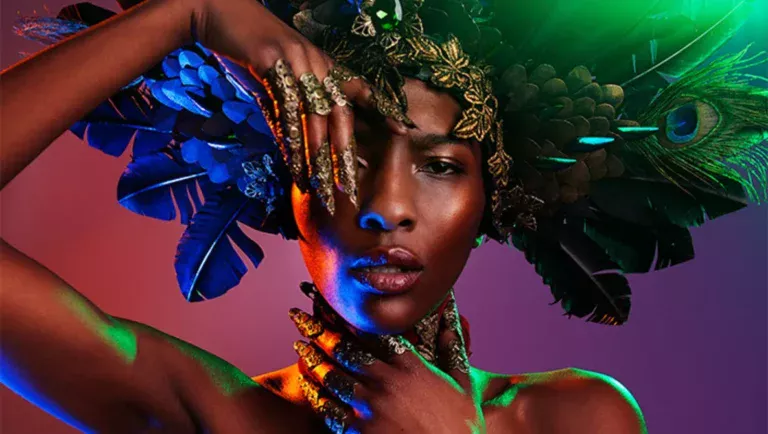SAM
Welcome to Sam Studio!
your ultimate destination for photography, modeling, and freelancing excellence. Elevate your visuals with us!
Contacts
Phone: +971 555 11 88 26
Email: [email protected]
© SAM Studio, 2024. All Rights Reserved.

Bold and Beautiful: The Art of Daring Photography
Photography is not merely the act of pressing a shutter button; it is an art form that captures moments, evokes emotions, and tells compelling stories. In the realm of daring photography, the focus extends beyond the ordinary to embrace boldness, creativity, and an unapologetic exploration of the unconventional. Let’s delve into the principles, techniques, and inspirations that define this genre and learn how photographers can push boundaries to create captivating images.
Understanding Daring Photography
Daring photography is characterized by its willingness to challenge norms, defy conventions, and experiment with bold concepts. It often involves:
1. Unconventional Subjects: Shooting subjects that may not conform to traditional standards of beauty or themes.
2. Creative Lighting: Using light in unexpected ways, such as extreme contrasts, silhouettes, or unusual sources like neon or fire.
3. Unique Perspectives: Exploring unusual angles, extreme close-ups, or dramatic wide shots to present a fresh viewpoint.
4. High-Risk Locations: Capturing images in challenging environments—be it extreme weather, urban rooftops, or underwater scenes.
5. Storytelling: Creating visuals that provoke thought, tell a story, or spark dialogue about societal or personal issues.
Techniques for Bold Photography
Achieving striking results requires a mastery of techniques and the courage to take calculated risks:
1. Play with Composition
* Rule-breaking: While the rule of thirds is a classic, daring photographers often break it, placing subjects in unconventional positions or even off-center.
* Layering: Incorporating multiple layers within a frame adds depth and complexity to the image.
2. Leverage Color and Contrast
* High Contrast: Amplify the dynamic range between light and dark to create dramatic tension.
* Color Psychology: Use bold, contrasting colors to evoke specific emotions or highlight subjects.
3. Experiment with Motion
* Long Exposures: Capture trails of light, flowing water, or moving crowds for surreal effects.
* Panning: Follow a moving subject to create a sense of speed and blur the background.
4. Focus on Textures and Details
* Use macro lenses to emphasize intricate details such as skin textures, fabric weaves, or natural patterns.
* Combine sharp focus with soft elements for a balanced yet intriguing frame.
5. Embrace Imperfections
* Allow intentional blur, grain, or distortion to add an artistic edge to your images.
* Shoot through objects like glass or fabric for unique effects.
Gear for Bold Photography
While creativity is key, having the right tools can make a significant difference:
1. Camera Bodies: Full-frame cameras like the Canon R6 or Sony A7 series offer excellent low-light performance and dynamic range.
2. Lenses:
* Prime Lenses: A 50mm f/1.8 for sharp portraits or a 100mm macro for detail shots.
* Wide-angle Lenses: Ideal for dramatic perspectives and expansive compositions.
3. Lighting Equipment:
* Speedlites, continuous LED lights, or strobes with gels for experimental lighting setups.
* Reflectors and diffusers to shape and soften light.
4. Accessories: Tripods, remote shutters, and ND filters are invaluable for long exposures and creative effects.
Drawing Inspiration for Daring Photography
1. Fine Art Photography: Explore works by legends like Annie Leibovitz or Salvador Dalí for their surreal and bold approaches.
2. Cinematic Techniques: Study the use of lighting and framing in films to translate cinematic drama into still images.
3. Cultural Exploration: Seek inspiration from global traditions, urban art, or natural phenomena to add uniqueness to your work.
4. Music and Literature: Songs, poems, and novels often evoke strong visual ideas that can be translated into daring concepts.
Overcoming Challenges
Pushing boundaries is not without obstacles. Here’s how to tackle them:
1. Fear of Judgment:
* Remember that art is subjective; what may seem unconventional to one might be groundbreaking to another.
* Seek feedback from trusted peers to refine your work.
2. Technical Limitations:
* Familiarize yourself with your gear to maximize its potential.
* Invest in post-processing tools like Adobe Lightroom or Photoshop to enhance your vision.
3. Safety Concerns:
* Plan extensively when shooting in high-risk environments.
* Use safety gear and never compromise your well-being for a shot.
Post-Processing: Adding the Final Touch
Editing plays a crucial role in elevating bold photographs:
1. Color Grading: Adjust hues, saturation, and tones to achieve a mood that complements your vision.
2. Selective Enhancements: Highlight specific areas of the image using brushes or gradients to draw focus.
3. Creative Effects: Experiment with double exposures, overlays, or composite techniques for surreal results.
2. Selective Enhancements: Highlight specific areas of the image using brushes or gradients to draw focus.
3. Creative Effects: Experiment with double exposures, overlays, or composite techniques for surreal results.
The Philosophy Behind Daring Photography
At its core, bold photography is about storytelling and self-expression. It’s not just about taking risks but about conveying emotions and perspectives that resonate deeply with viewers. By daring to explore uncharted territory, photographers can break barriers, inspire others, and leave a lasting impact on the art world.
Conclusion
Whether you're an aspiring photographer or a seasoned professional, embracing boldness can transform your work. The key lies in balancing creativity with technique, preparation with spontaneity, and confidence with humility. Dare to dream, dare to create, and dare to capture the extraordinary.
Comments
Kristeen
Wayne
Chau
Richie
Lien
Celinda
Marilou
Dianne
Rene
Katia